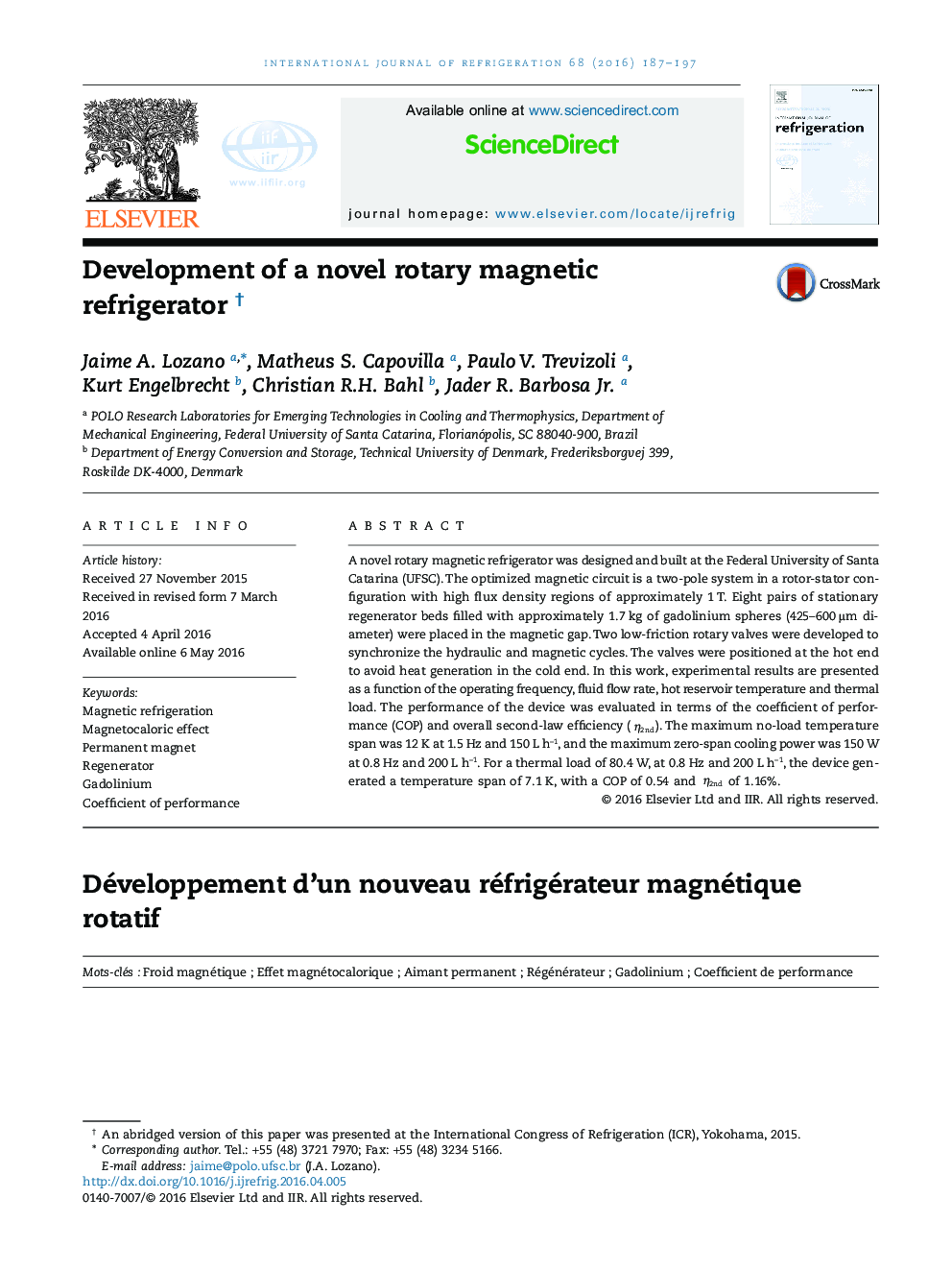| Article ID | Journal | Published Year | Pages | File Type |
|---|---|---|---|---|
| 786636 | International Journal of Refrigeration | 2016 | 11 Pages |
•Design aspects and performance data of a novel rotary-type magnetic refrigerator.•New fluid flow distribution system placed at the hot end to reduce frictional heating.•Experimental results for different conditions of thermal load, frequency and flow rate.•System performance evaluated in terms of the COP and the second-law efficiency.•The device generated a temperature span of 7.1 K for a thermal load of 80.4 W.
A novel rotary magnetic refrigerator was designed and built at the Federal University of Santa Catarina (UFSC). The optimized magnetic circuit is a two-pole system in a rotor-stator configuration with high flux density regions of approximately 1 T. Eight pairs of stationary regenerator beds filled with approximately 1.7 kg of gadolinium spheres (425–600 µm diameter) were placed in the magnetic gap. Two low-friction rotary valves were developed to synchronize the hydraulic and magnetic cycles. The valves were positioned at the hot end to avoid heat generation in the cold end. In this work, experimental results are presented as a function of the operating frequency, fluid flow rate, hot reservoir temperature and thermal load. The performance of the device was evaluated in terms of the coefficient of performance (COP) and overall second-law efficiency (η2ndη2nd). The maximum no-load temperature span was 12 K at 1.5 Hz and 150 L h−1, and the maximum zero-span cooling power was 150 W at 0.8 Hz and 200 L h−1. For a thermal load of 80.4 W, at 0.8 Hz and 200 L h−1, the device generated a temperature span of 7.1 K, with a COP of 0.54 and η2ndη2nd of 1.16%.
Graphical AbstractFigure optionsDownload full-size imageDownload as PowerPoint slide
